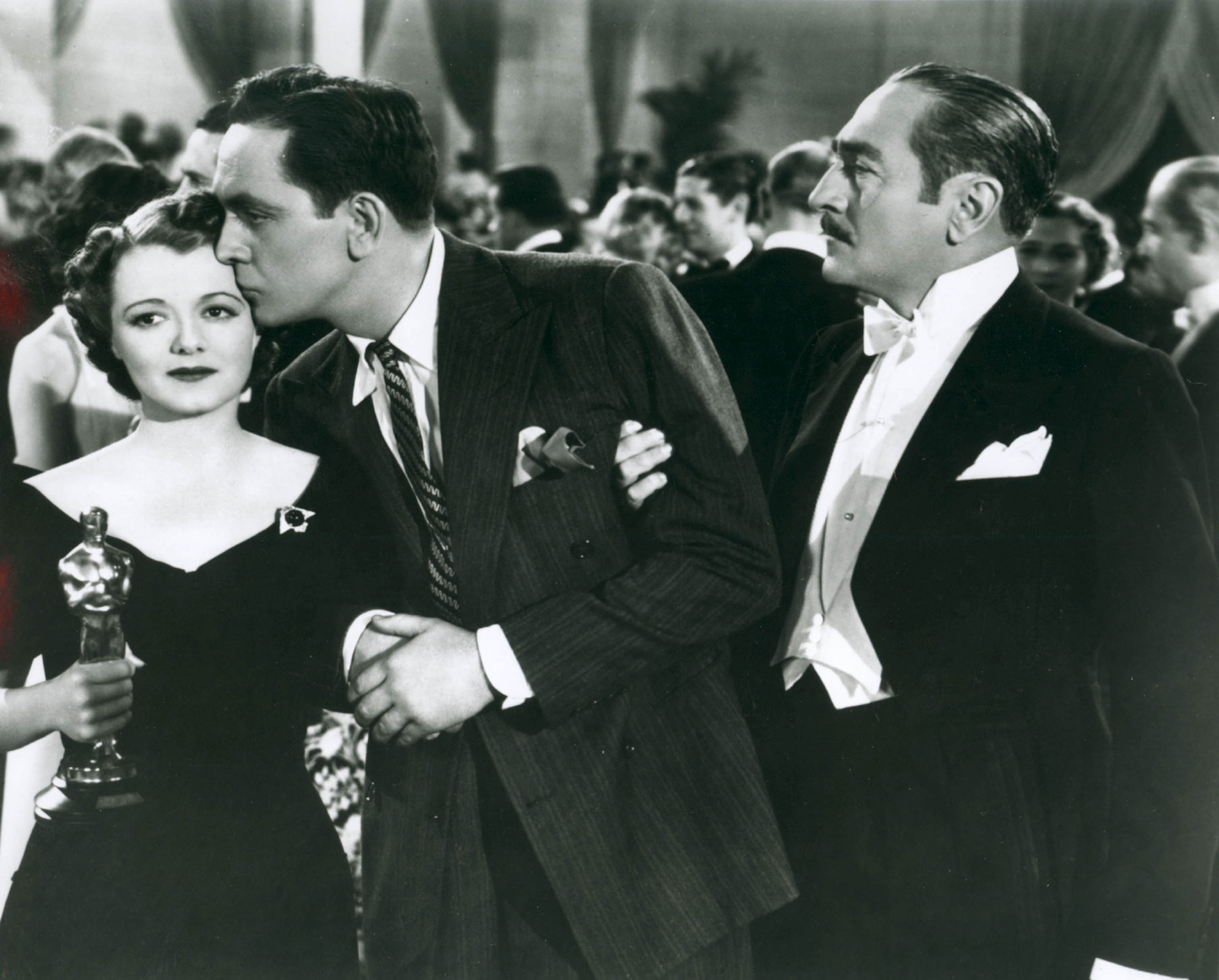Review: A Star is Born (1937)
The original A Star Is Born is a landmark of neither formal innovation nor artistic excellence. Although it is a capable, well-acted, and enjoyable classical Hollywood movie, it is chiefly significant, rather, for the luminous window it offers into Hollywood’s self-conception, vividly and emotionally presenting two foundational myths.
The first myth that A Star Is Born presents is an idealized story of the aspiring and ultimately ascendant movie star. The narrative operates as a hero’s journey. Janet Gaynor (the silent film star who appears in, among many films, Murnau’s Sunrise) plays Esther Victoria Blodgett, a humble North Dakota farm girl who escapes to Hollywood to try to make it as an actress in “the pictures.” Enduring the travails of trying to land an audition and catch a break, she eventually becomes a movie star, transforming into the screen goddess, Vicki Lester. On the mythic level, we witness the heroine journey from her obscure, mundane life to the adventurous realm of Hollywood. Her transformation will, in the words of her grandmother (May Robson), cost her her heart. In the final phase of the heroine’s journey, she returns to the ordinary world in the form of the star on the silver screen—and in the last scene, as a voice on the radio at a movie premiere—bringing the boon of escapism and joy to audiences everywhere. If this sounds exaggerated, it is. Hollywood has never shrinked from grand self-conceptions.
The second myth that A Star Is Born presents is an heroic tragedy, about a good man and waning movie star, Norman Maine (Fredric March), with the fatal flaw of alcoholism. Although his addiction to drink fills Norman with bouts of nihilism and invites the revenge of former colleagues, he eventually sacrifices himself for his beloved, assuring Vicki’s success. Norman walks out into the ocean’s waves like a victim casting himself onto a flaming altar. The suicide scene is weirdly portrayed, and it suggests the film’s grander pretensions.
Thus, A Star Is Born presents both sides or versions of Hollywood. On the one hand, Hollywood embodies the American Dream, offering upward social mobility to the hopeful, optimistic, and persistent (the last quality being especially important, since the film suggests the importance of luck as well as hard work in being successful). A girl with nothing from North Dakota comes to Hollywood and becomes someone important. On the other hand, A Star Is Born presents a harsh view of the cruelty of Hollywood competition and the unfeeling operations of the industry machine. It also lays bare the drive towards self-destruction that, for over a century, has plagued its brightest stars. It’s all there on the screen in A Star Is Born: the good, the bad, the beautiful, the ugly—the story of Hollywood. The film’s double-vision indicates a level of self-awareness, as it values fame and the belief in pursuing one’s dreams while recognizing that fame and the pursuit can destroy people.
Subsequent movies about Hollywood (or show business) tend to emphasize one side, one myth, over the other. (And the lives of the stars, constructed in large part by the studio-corporations and their marketing and PR films, continue to play out these myths.) For instance, Singin’ in the Rain is gently satirical yet ultimately celebrates the myth of the aspiring star. Gene Kelly’s older, more-experienced star, who helps Debbie Reynolds’ aspiring actress ascend, has no tragic flaw. On the dark side, we have The Player or Maps to the Stars.
The narrative aside, A Star Is Born is a capably made and acted film. It offers some nice technicolour shots of the old Hollywood hills and Grauman’s Chinese Theatre, and its vision of a Hollywood long gone is appealing. The two leads are quality actors. Gaynor has a strangely pretty face, and she’s a good character actor, as her scene as a waitress trying to make impressions to get some attention indicates. March delivers on some key moments to convey the tragedy of his character. There are some potent scenes of shame and destruction.
What’s also noticeable is the film’s refusal to let anything come into equal importance to Vicki’s stardom. Not Norman. Not Esther’s personal life. The show must go on, and ultimately it is the grandmother who indicates why. Because it’s the deal you make if you want all the fame. So the film even offers a kind of fable to those in the industry about the deal for fame and fortune.
With good characters and some effective humour and drama, this is a vintage Hollywood tale with a strong sweeping narrative in the classical style.
Hollywood has always liked to tell stories about itself (and rewarded those stories handsomely come Awards season). Indeed, the fundamental telling, A Star Is Born, has itself been reinterpreted and remade three times. (The famous 1954 musical version, starring Judy Garland and James Mason, is also about Hollywood; the 1976 version, starring Barbra Streisand and Kris Kristofferson, is about rock-and-roll, as is the 2018 remake, starring Bradley Cooper and Lady Gaga. The original film riffed on an earlier 1932 feature, What Price Hollywood?). Even though it has been remade and reinterpreted for each generation, the original A Star Is Born is set apart for the originality and purity of its dual vision of Hollywood. It has given birth to so much.
8 out of 10
A Star is Born (1937, USA)
Directed by William A. Wellman; screenplay by Dorothy Parker & Alan Campbell & Robert Carson; starring Janet Gaynor, Frederic March, Adolphe Menjou, and May Robson.
